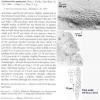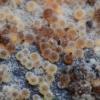
13-01-2016 07:55
 Andreas Gminder
Andreas Gminder
Dear collegues, I have recieved a collection of d

12-01-2016 18:52
hannie wijersHello, I liked some help. On a branch (I dont know

11-01-2016 21:53
 Bernard CLESSE
Bernard CLESSE
Bonsoir à tous,Après avoir découvert Dasyscyph

12-01-2016 23:06
Thorben HülsewigHi thereFor two days i found on the moss Lunularia

09-01-2016 20:56
 Bernard CLESSE
Bernard CLESSE
Ici, je ne sais pas si je fais bien de le mettre s

12-01-2016 12:34
 Blasco Rafael
Blasco Rafael
Hola, con la Piña tambien recogi unas aciculas de
gregarious Bionectriaceae with white conidial felt on Fagus wood
Hans-Otto Baral,
03-09-2017 17:56
 Hi Forum
Hi ForumFrom Hans Bender I got these pics of a macroscopically striking Bionectriaceae.
2.9.2017, MTB 4704/3 on decorticated branch of Fagus on ground.
Perithecia 0.2-0.3 mm diam., unchanged in KOH.
Asci with distinct apical ring (in MLZ).
Spores *8.5-10 x 2.9-3.4 µm, 1-septate, 4-guttulate.
Conidia ellipsoid, biguttulate, formed terminally on hyaline hyphoid conidiophores on white felt around the perithecia.
Zotto
Christian Lechat,
03-09-2017 18:53

Re : gregarious Bionectriaceae with white conidial felt on Fagus wood
Hi Zotto,
I think your fungus could be Lasionectria mantuana and its acremonium-like asexual morph. I have one specimen this species collected by Torstenof in Germany, which was cultured and sequenced.
All the best,
Christian.
I think your fungus could be Lasionectria mantuana and its acremonium-like asexual morph. I have one specimen this species collected by Torstenof in Germany, which was cultured and sequenced.
All the best,
Christian.
Hans-Otto Baral,
04-09-2017 09:41

Re : gregarious Bionectriaceae with white conidial felt on Fagus wood
Hi Christian
many thanks, I never heard of this. It is the type of Lasionectria. Do you lknow a more recent description of it?
Could you please send me a pdf of your article
Two-new-species-of-Lasionectria-Body-CLL10.03.12-0001.docx?
I only find the doc in the web.
Zotto
many thanks, I never heard of this. It is the type of Lasionectria. Do you lknow a more recent description of it?
Could you please send me a pdf of your article
Two-new-species-of-Lasionectria-Body-CLL10.03.12-0001.docx?
I only find the doc in the web.
Zotto
Christian Lechat,
04-09-2017 10:52

Re : gregarious Bionectriaceae with white conidial felt on Fagus wood
the most recent description of this species is in Rossman et al. (1999).
Here is the PDF of Two-new-species-of-Lasionectria.
Cheers,
Christian
Here is the PDF of Two-new-species-of-Lasionectria.
Cheers,
Christian
Thomas Læssøe,
04-09-2017 13:12
Re : gregarious Bionectriaceae with white conidial felt on Fagus wood
is "Nectria flavida Corda" the same or ???
cheers
cheers
Hans-Otto Baral,
04-09-2017 15:48

Re : gregarious Bionectriaceae with white conidial felt on Fagus wood
Thanks! I made a compilationm of Rossman& Samuels data from the holotype.
Spore size would actually fit perfectly, but not the size evaluated from the given scale.
Also the perithecia are not as crowded. But it is good to see that this seems to be something special.
If you want the material, Hans will be happy to send it to you. Not sure if I find your address rapidly.
Zotto
Spore size would actually fit perfectly, but not the size evaluated from the given scale.
Also the perithecia are not as crowded. But it is good to see that this seems to be something special.
If you want the material, Hans will be happy to send it to you. Not sure if I find your address rapidly.
Zotto
Christian Lechat,
04-09-2017 16:55

Re : gregarious Bionectriaceae with white conidial felt on Fagus wood
Hi Thomas,
Nectria flavida = Lasionectria flavida according IF. I don't know this ghost species, which would have ascospores 17 µm long.
Christian
Nectria flavida = Lasionectria flavida according IF. I don't know this ghost species, which would have ascospores 17 µm long.
Christian
Christian Lechat,
04-09-2017 17:03

Re : gregarious Bionectriaceae with white conidial felt on Fagus wood
Zotto,
ascospores of Torsten's collection are 7.5-)8-10(-10.5) x 2.8-3.5 µm, striate. Striation is difficult to see.Phylogenetic analysis of its ITS and LSU sequences showed 100% similarity with Lasionectria mantuana.
Your specimen could be interesting and I would like to examine it if possible.
My address:
Ascofrance
C. Lechat
64 route de Chizé
79360 Villiers-en-Bois
France
Regards,
Christian
ascospores of Torsten's collection are 7.5-)8-10(-10.5) x 2.8-3.5 µm, striate. Striation is difficult to see.Phylogenetic analysis of its ITS and LSU sequences showed 100% similarity with Lasionectria mantuana.
Your specimen could be interesting and I would like to examine it if possible.
My address:
Ascofrance
C. Lechat
64 route de Chizé
79360 Villiers-en-Bois
France
Regards,
Christian
Hans-Otto Baral,
04-09-2017 17:13

Re : gregarious Bionectriaceae with white conidial felt on Fagus wood
Thanks, I told him.
If you have an illustration of Torsten, can I see it for comparison?
The sequenced sample is from Finland by U. Söderholm, as I see in GenBank and CBS.
If you have an illustration of Torsten, can I see it for comparison?
The sequenced sample is from Finland by U. Söderholm, as I see in GenBank and CBS.
Christian Lechat,
04-09-2017 18:04
Hans-Otto Baral,
04-09-2017 18:29

Re : gregarious Bionectriaceae with white conidial felt on Fagus wood
Yes, this looks quite similar.
I am not sure if this fungus survives well when air-dried and you receive it in some days. What do you think? Hans will send it tomorrow.
I am not sure if this fungus survives well when air-dried and you receive it in some days. What do you think? Hans will send it tomorrow.
Christian Lechat,
04-09-2017 21:12

Re : gregarious Bionectriaceae with white conidial felt on Fagus wood
no problem, usually, Hypocreales are still exploitable several weeks after the collecting.
Christian
Christian
Christian Lechat,
12-09-2017 03:01

Re : gregarious Bionectriaceae with white conidial felt on Fagus wood
Hi Zotto,
I received the specimen two days ago for examination.
This fungus is not the same than the specimen collected by Torsten Richter and differs from it in having verruculose ascospores, while Torsten's specimen has striate ascospores.
I am not sure that the specimen collected by Hans Bender belong to the genus Lasionectria such as currently considered. I tried to culture this collection, the ascospores are germinating after one day. Sequencing is required to know where is placed this fungus. If it is not Lasionectria, it could be the genus Protocreopsis.
Christian
I received the specimen two days ago for examination.
This fungus is not the same than the specimen collected by Torsten Richter and differs from it in having verruculose ascospores, while Torsten's specimen has striate ascospores.
I am not sure that the specimen collected by Hans Bender belong to the genus Lasionectria such as currently considered. I tried to culture this collection, the ascospores are germinating after one day. Sequencing is required to know where is placed this fungus. If it is not Lasionectria, it could be the genus Protocreopsis.
Christian
Hans-Otto Baral,
12-09-2017 07:48

Re : gregarious Bionectriaceae with white conidial felt on Fagus wood
Hi Christian
interesting! Well, this may be all true and it throws a light on the current tendency of strong generic splits which require sequencing to know the genus. We have lots of such cases in Orbilia with very slight morphological differences but a great molecular distance, placing two very similar species in two very remote clades, and one may consider different genera for them. We have it easier, as we currently place all in the big genus Orbilia, but we have the problem of our subgeneric groups: shall we put emphasis more on morphology or on genetics?
Zotto
interesting! Well, this may be all true and it throws a light on the current tendency of strong generic splits which require sequencing to know the genus. We have lots of such cases in Orbilia with very slight morphological differences but a great molecular distance, placing two very similar species in two very remote clades, and one may consider different genera for them. We have it easier, as we currently place all in the big genus Orbilia, but we have the problem of our subgeneric groups: shall we put emphasis more on morphology or on genetics?
Zotto

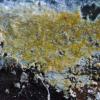
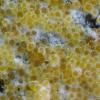
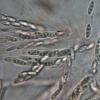
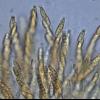
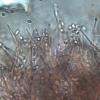
 Two-new-species-of-Lasionectria-Lechat-amp-J.-Fourn-0001.pdf
Two-new-species-of-Lasionectria-Lechat-amp-J.-Fourn-0001.pdf